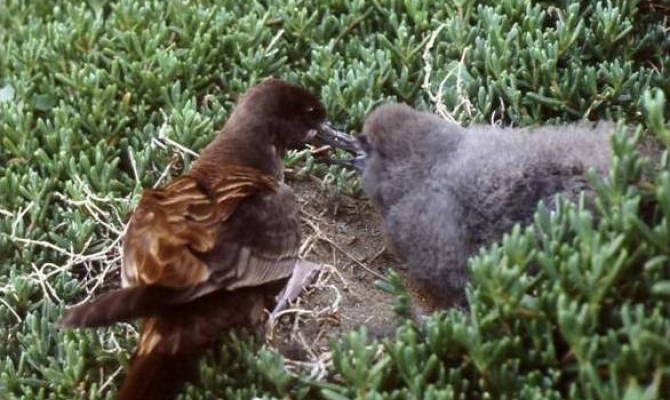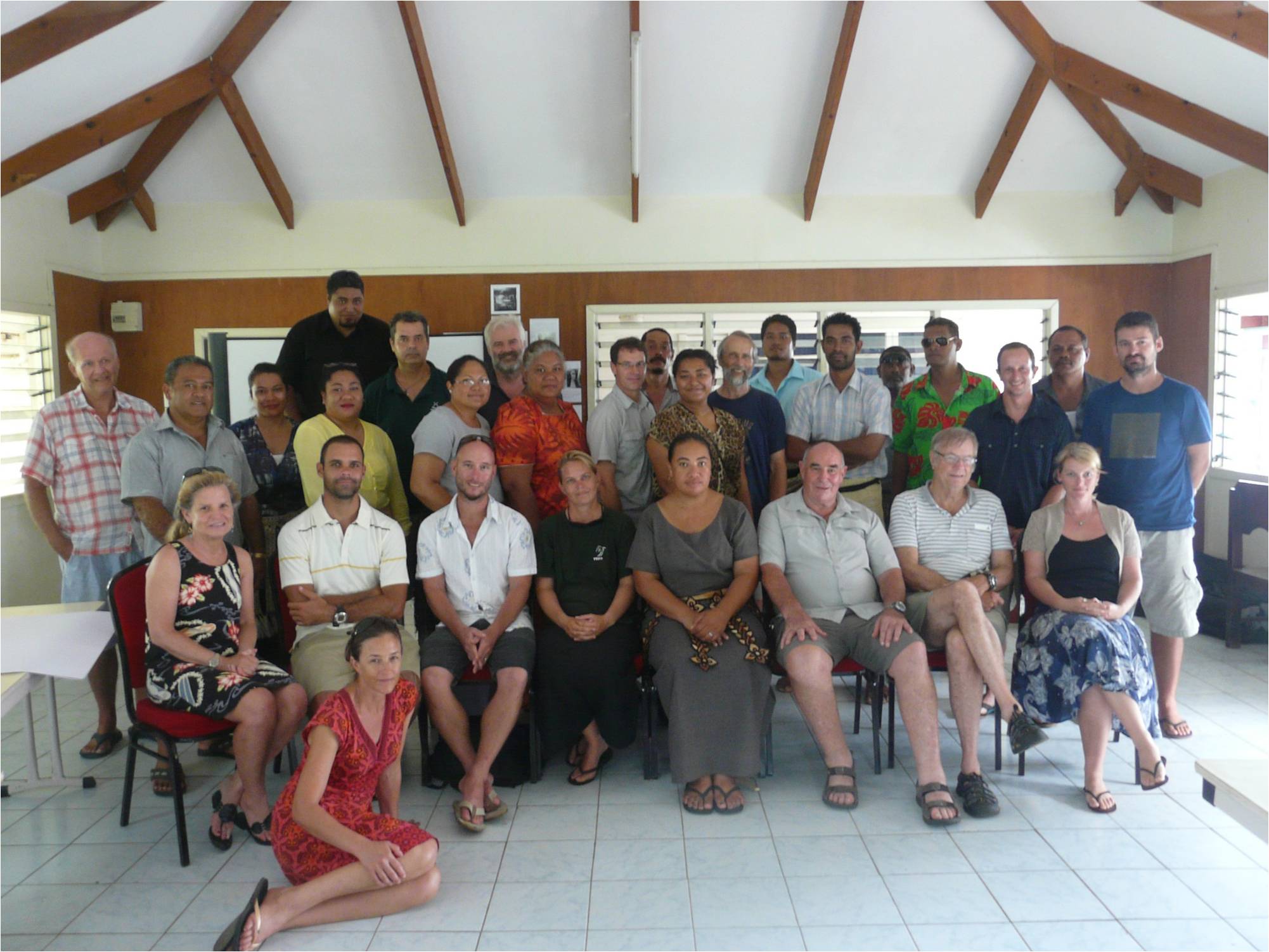
Biodiversity Conservation

Image courtesy of presentation by Ms. Matoto
13 October 2014, Peyongchang Korea, CBD COP12 - Amazing discoveries were made during a survey of the biodiversity in the Vava'u islands of the Kingdom of Tonga. Twelve new native plant species records including a new record for Tonga, the humpback whale population for Tonga has recently been estimated at over 2,000 individuals and 29 new island species records for reptiles across the Vava'u Island Group were just a few of the discoveries documented.
These findings and an overview of the work involved during the Biological Rapid Assessment Programme (BioRAP) in Tonga this year were presented during a special event hosted by the Secretariat of the Pacific Regional Environment Programme (SPREP) at the 12th Conference of the Parties to the Convention on Biological Diversity. Our Pacific Voyage: Natural Solutions to Island Resilience side event featured presentations from SPREP, Tonga, Fiji, and Palau.
The Vava'u archipelago is located north of Tongatapu, the main island group, and consists of approximately 60 smaller islands formed of karstic limestone with a couple of volcanic origins. The terrestrial survey involved assessments of land and sea birds, flying foxes, plants, reptiles, land snails and insects, while the marine survey included assessments of coral reef fish and commercial fish, corals and other marine invertebrates, sea turtles and cetaceans.
"The findings of this BioRAP survey have identified or re-confirmed the critical importance of the biodiversity and ecosystems of Vavau's terrestrial and marine environments and the urgent need for follow-up activities to manage and mitigate threats for their conservation," said Ms. Atelaita Matoto, Director of Environment for Tonga.
"The information gathered will support and inform national planning processes towards meeting the Sustainable Development Goals, reporting on the Tonga State of Environment, and the review of the National Biodiversity Strategy and Action Plan."

The BioRAP survey involved 17 scientists and 18 staff from the
Government of Tonga and NGO representatives
Government of Tonga and NGO representatives
BioRAP surveys are coordinated by SPREP with the first two surveys already conducted in the Central cloud forest of Savaii in Samoa and the second survey in Nauru.
The Vavau islands BioRAP survey is part of this series of BioRAP surveys which was made possible under the Integrated Islands Biodiversity Project implemented by SPREP in collaboration with the Government of Tonga, the Vava'u Environment Protection Agency an NGO, and the Waitt Foundation. The IIBP is funded by the Global Environment Facility Pacific Alliance Sustainability.
The BioRAP enabled a revisiting of two of the three islands that was subject to rat control programmes in 2002, appearing to be successful as the islands were free of rats although a further follow-up has been recommended.
Tonga shared lessons with Samoa at the global biodiversity conference. Samoa carried out a rat eradication programme on the islands of Nu'utele and Nu'ulua of the Aleipata Island Group from 2009 to 2011. After removing the friendly ground doves from the island, rat bait was dropped as well as the laying of 500 glue traps with each visit.
No rats were caught in either traps despite several sightings of a rat on Nu'utele and Nu'ulua in 2009 and 2010. However a rat was sighted on Nu'utele in 2011 and a survey in July caught eight Pacific rats, the Nu'ulua survey in 2012 discovered no rats.
While the project ended, it is not yet known whether rats were eradicated on either island. Although rats are present now on Nu'utele it is not clear whether these were survivors of the operation or re-invaders. It is unlikely that Pacific Rats would swim the distance from Uplou to Nu'utele but a tsunami in September 2009 just after the eradication operation washed up large quantities of debris on the island, on which rats could have floated.
Rat samples found on Nu'utele island and from Aleipata on the main land of Samoa have been sent to New Zealand for DNA testing to determine whether the rat found in Nu'utele is the same species as that eradicated or from Aleipata.
"Once we have found this out definitely then we can address this eradication again, hence our interest in what Tonga has done and their achievements,' said Suluimalo Amataga Penaia, CEO of the Ministry of Natural Resources and Environment, Samoa.
"It doesn't matter how well you plan a programme or a project , once nature calls it will be really hard for us to counter. I think these are lessons learnt, we still have to take into account natural disasters and so forth, we need to assess all the risks."
The lessons learnt from the BioRAP findings in Tonga has provided the opportunity for Samoa to learn more about the rat eradication programme, working together in the Pacific islands region, learning from each other.
As for the next steps in Tonga now that the BioRAP is complete in Vava'u the findings will feed into planning.
Eight terrestrial and 16 marine sites, three of which are also identified as important terrestrial sites, have been identified that have significant conservation values and require special effort to conserve the values.
The key features of each site, including their approximate area, conservation values, ownership, threats and recommended conservation actions will be shown in the BioRAP report. Special effort should be made to manage sites holistically in a ridge to reef approach that develops synergies between terrestrial and marine values.
"It is recommended that a key next step is to conduct a conservation planning process in Vava'u that will develop a detailed action plan for the conservation of the sites, including the possible merger of sites into larger conservation units," said Ms. Matoto.
"This will determine specific management objectives for each site, and where appropriate will prepare site management plans and funding proposals for further support.
For more information please contact Ms. Atelaita Matoto